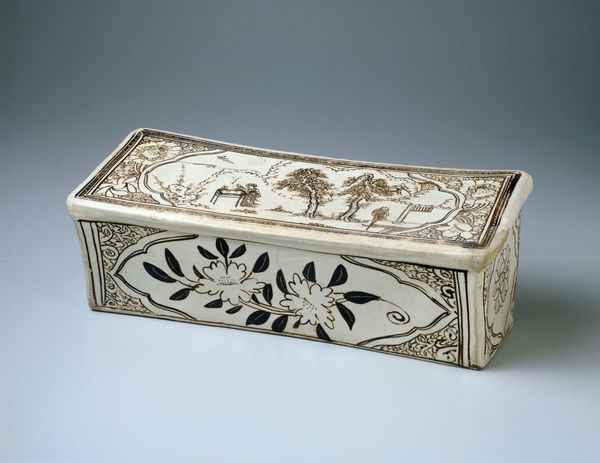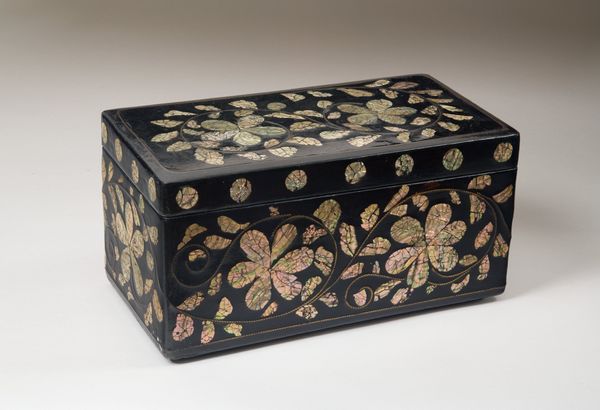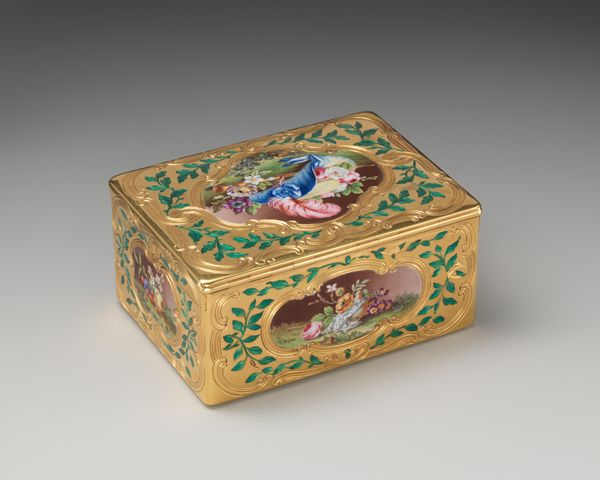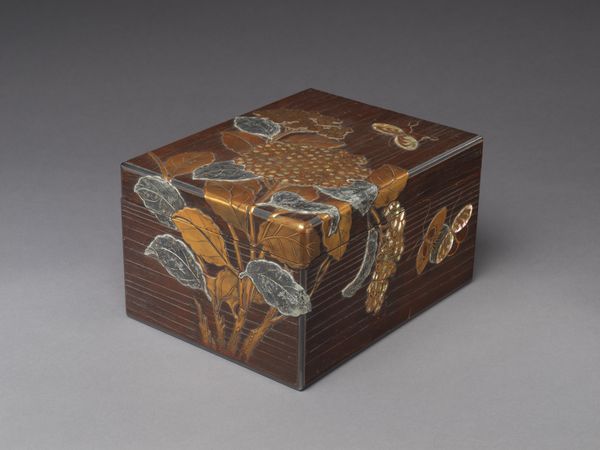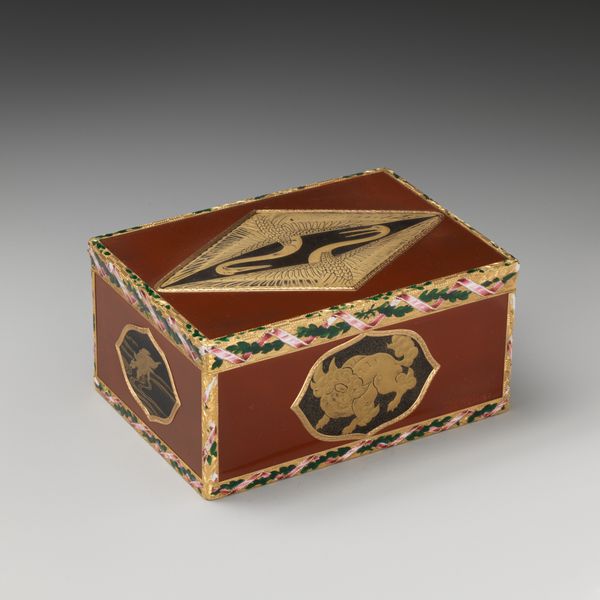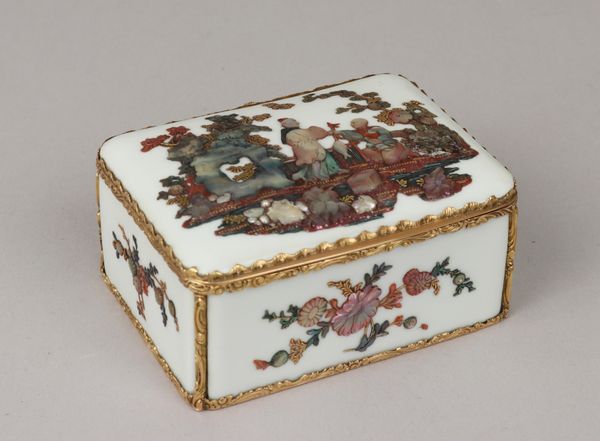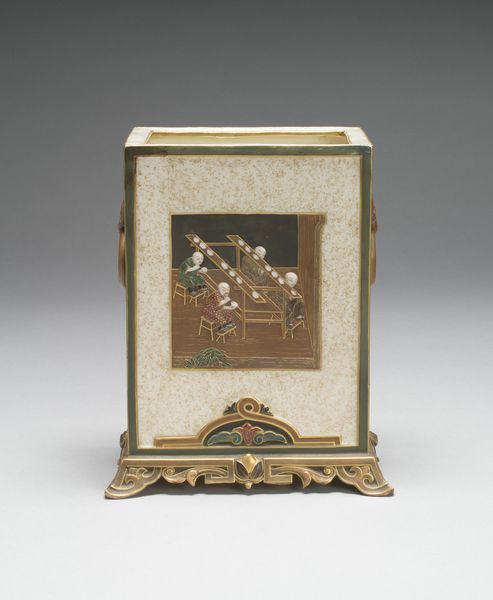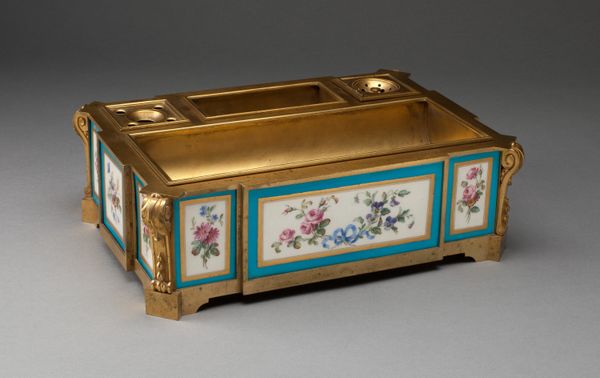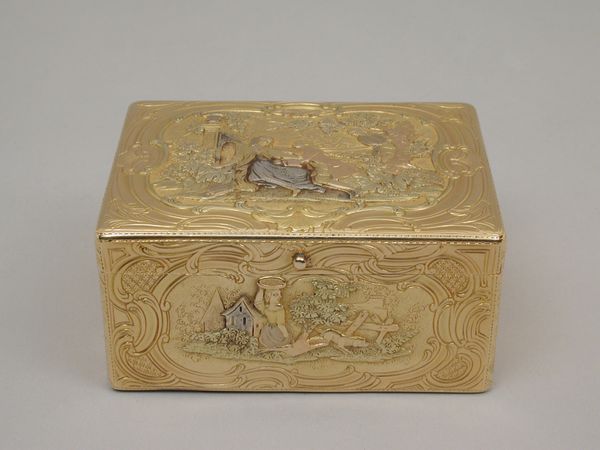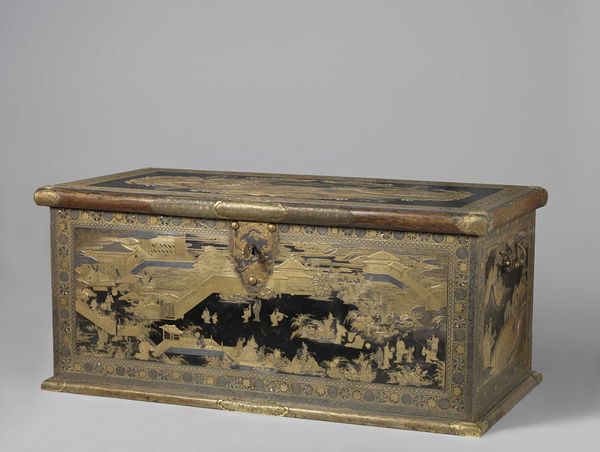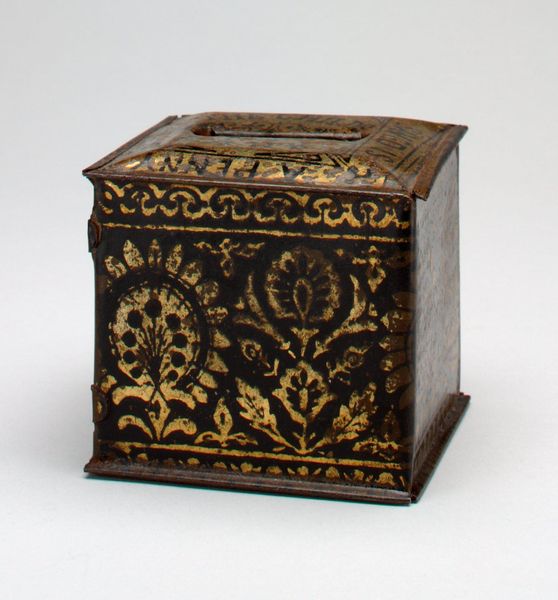
carving, metal, sculpture, ivory
#
carving
#
animal
#
metal
#
landscape
#
sculpture
#
orientalism
#
decorative-art
#
ivory
#
miniature
#
rococo
Dimensions: 3 3/16 × 2 5/16 × 1 1/8 in. (8.1 × 5.9 × 2.9 cm)
Copyright: Public Domain
Editor: This exquisite snuffbox, crafted by Louis Roucel between 1768 and 1769, features ivory and metalwork. I'm struck by its depiction of what looks like a rhino in an exotic landscape – it’s so detailed for such a small object. How do you interpret this miniature scene? Curator: It’s tempting to view this simply as Rococo decorative art, but let’s unpack the "orientalism" at play. How does it reflect the European fascination with, and often misrepresentation of, other cultures? Editor: I see it in the palm trees and what looks like Asian-style architecture on the sides. So, it’s not really about accurately portraying those cultures? Curator: Precisely. This isn't about authentic representation but rather about constructing a fantasy – a playground for European imaginations fueled by trade and colonial ambitions. What does it tell us about power dynamics of the time? The rhino itself, as a symbol of the "exotic," is being literally contained. Editor: So, the beauty and intricacy almost mask a more problematic narrative? It makes me question what’s absent here. Who isn’t being represented, or is being misrepresented, in this "fantasy?" Curator: Exactly! By critically engaging with objects like this snuffbox, we can uncover the complex histories of cultural exchange and power that shaped not only the art of the period, but also our understanding of the world today. Editor: That really shifts my perspective. I now see it less as just a pretty object and more as an artifact of cultural appropriation, ripe for critical discussion. Curator: And that’s the beauty of engaging with art history through a critical lens, right? It pushes us to ask questions and see beyond the surface.
Comments
No comments
Be the first to comment and join the conversation on the ultimate creative platform.
